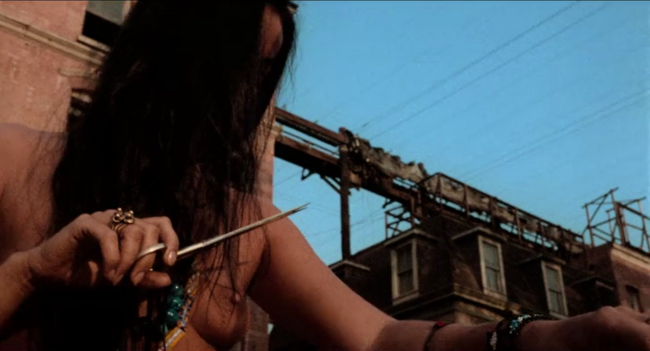Art in the Noise

"No machine ever produced as much as it consumed," says one character in Orson Welles' 2018 film The Other Side of the Wind. Considering the decades since principal photography was completed on the film and the money expended in legal battles in the effort to get it finished and released, the quote may well apply to the film itself. But you can't really measure great art against quantitative things like time or money, to paraphrase William S. Burroughs on the subject of souls*. Certainly the soul of Orson Welles is in this film; bitter and critical about himself, filmmaking, and the culture of filmmakers and the people who surround them. It's a movie about movies about movies--better than that, it's the story about an artist lost in a world where people insist on foisting their interpretations on his art to elevate or flatter themselves.

At the centre of the film is a director, Jake Hannaford, modelled on a particular kind of 20th century macho auteur with John Huston perfectly cast in the role, gamely playing up the man's casual, easy going cruelty. Welles claimed Ernest Hemmingway primarily as the model. It's a character that resembles Welles less than most people would say, though Hannaford is a lot like Welles' character in Touch of Evil, particularly when he shares the screen with a Marlene Dietrich-ish character played by Lilli Palmer, who, like Dietrich in Touch of Evil, sadly and coolly makes pronouncements on Hannaford's self-destructiveness.

But as a character, he's better suited to making a point Welles makes with the film about the divide between the artist and the people in his or her orbit. Mostly the film follows Hannaford and a host of friends, collaborators, and journalists at the man's seventieth birthday party, a party for which he has the ulterior motive of securing funding for his film also called The Other Side of the Wind. To questions and opinions about himself and his work he's cagey, mean, funny, and charming--all ways of diverting people from their attempts of reducing him to something easy to print, some juicy interpretation that they can make hay from while conveniently obscuring his actual intent.

Susan Strasberg plays a character purportedly based on Pauline Kael but she misinterprets Hannaford's work in much the way Laura Mulvey misinterpreted Vertigo, assuming a story about a flawed man is meant to degrade women. The film within a film, which is intended as a parody of Antonioni and New Wave filmmaking in general, includes, as being a rough cut, audio of Hannaford gleefully instructing his leading actress (Oja Kodar) to enact castration fantasies.

It may have been meant as a parody of Antonioni but the film within a film is still remarkably beautiful, indeed capturing some of the kind of sharp edged, sepulchral beauty Antonioni excelled at. Much of it consisting of the naked woman wandering a desert and the dilapidated MGM backlot--where Welles and his crew apparently shot covertly without permission.

Hannaford may only be vainly attempting to stay relevant yet, even if that's true, he still creates something more beautiful and rewarding than the swarm of hangers on at the party, even if that party consumes ten times the raw material.

The Other Side of the Wind is on Netflix.
Twitter Sonnet #1172
In purchased rounds the ghosts deliver drinks.
Across the bar a heavy hand's at rest.
In saving time the hour slowly sinks.
A later start to-day is surely best.
The sky of strings combine to make an Earth.
Tomato kits illume the garden's seed.
Against legumes a bread has measured worth.
The wild flowers watched a fateful deed.
A water picture backs against the card.
The tiny trees became a closet nail.
A thousand bulbs collect a single shard.
In sordid seas the cake became a whale.
Accosted wind replays the storied hair.
A space of years confirmed the movie rare.
*There are no honourable bargains
Involving exchange
Of qualitative merchandise
Like souls
For quantitative merchandise
Like time and money.